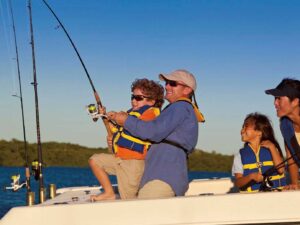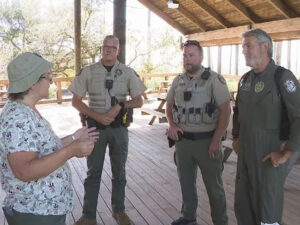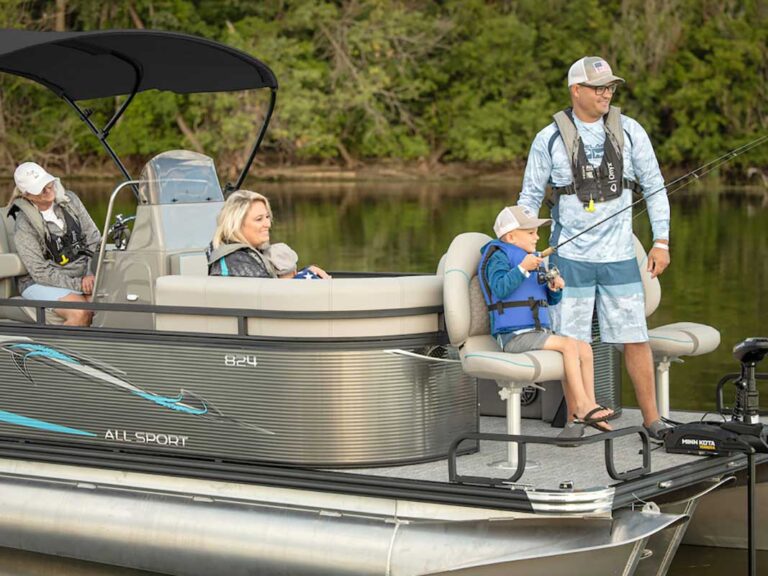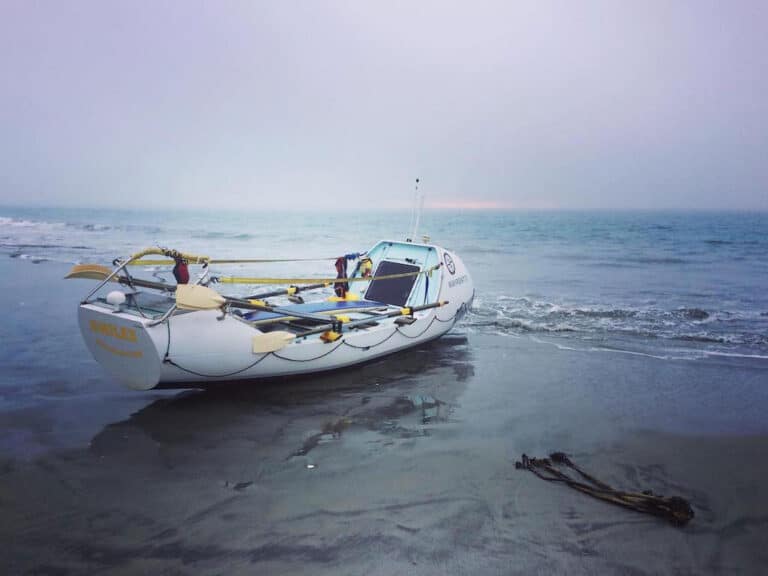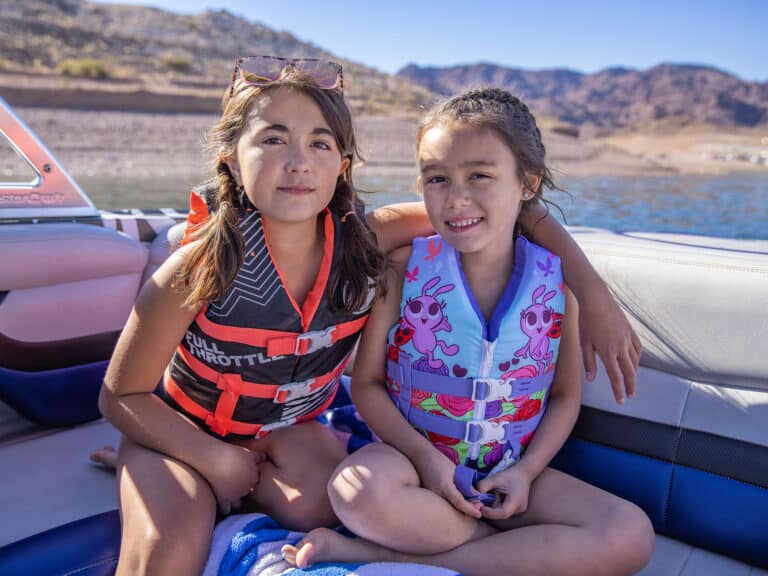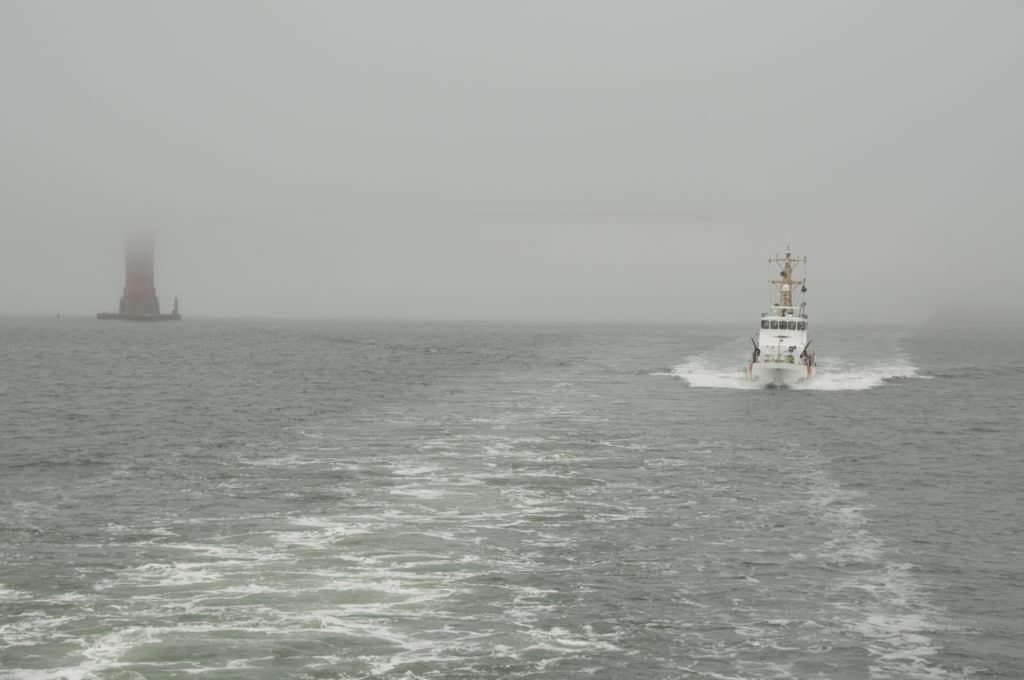
In just minutes, fog, heavy rain, and in some cases even snow can reduce visibility on the water to just a few yards, leaving boaters confused as to their position, and what obstructions may be around them. At sunset recognizable shoreline features disappear, often replaced by unfamiliar and confusing lights that leave many boaters disoriented and unsure how to get safely home. At night, depth perception and color recognition are impaired. Other boats may be operating without required navigation lights, in violation of federal law requiring navigation lights from sunset to sunrise and during periods of restricted visibility. Without lights they can be very difficult to see in the water.
Operating a boat when visibility is restricted raises the risk of hitting fixed objects in the water and colliding with other boats. That’s why it’s prudent to lessen your risk by taking preventive action that includes slowing to a safe speed, energizing your navigation lights, and sounding the appropriate sound signals for your vessel type, as required by the Navigation Rules, available online through the Coast Guard Navigation Center at www.navcen.uscg.gov. It is also important to post responsible lookouts who will use all of their senses – sight, sound, even smell – to determine what lies ahead in time to avoid an accident. A lookout should scan 360 degrees, as accidents at night can occur when a vessel is overtaken from behind.
Illustrations and descriptions of the specific lighting requirements for every type of watercraft are provided in the Navigation Rules, which should be your primary source of information. Briefly speaking, however, these are the navigation lights required for recreational vessels:
- Sidelights: These red and green lights are visible to another vessel approaching from the side or head-on. The red light indicates a vessel’s port (left) side; the green indicates a vessel’s starboard (right) side. These lights are also referred to as combination lights when displayed on a vessels bow, or, in the case of sailboat, when on top of the mast.
- Stern Light: This white light can be seen from behind or nearly behind the vessel.
- Masthead Light: This white light shines forward and to both sides and is required on all power-driven vessels. Since a masthead light must be displayed by all vessels when under engine power, the absence of this light indicates a sailboat under sail.
- All-Round White Light: On power-driven vessels less than 39.4 feet in length, this light may be used to combine a masthead light and stern light into a single white light that can be seen by other vessels from any direction. This light also serves as an anchor light when sidelights are extinguished.
Remember that displaying the proper navigation lights at night and during periods of restricted visibility is only half of the issue. You also need to be able to identify and interpret the navigation lights you see on other boats in the vicinity. This can help you determine if you are in an overtaking, meeting or crossing situation.
After dark, the painted color patterns of Aids to Navigation – the buoys and beacons that mark safe water and hidden dangers and tell boaters their position in relation to land – are generally replaced by a configuration of lights. You will need to be able to identify these navigation aids to help determine your position and stay out of dangerous situations. To get an accurate position you will need to use a nautical chart. The chart will show you the position of the Aids to Navigation, their light characteristics and what landmarks you may be able to see and identify once the sun goes down.
In addition to navigation lights, the Navigation Rules require all vessels to carry sound-producing devices for use during meeting, crossing, and overtaking situations. Sound signals are also required during periods of reduced visibility to make other boaters in the area aware of your relative position and the status of your vessel; for example, a power driven vessel underway and making way is required to sound one prolonged blast at intervals not to exceed two minutes.
Is it easy to get lost or disoriented when visibility is limited? It is. Things look very different at night, which can be stressful for inexperienced boat operators. Expect the unexpected. Practice good risk assessment when deciding whether to boat in the dark. Make sure your required safety equipment is on board, including visual distress signals, and that everyone is wearing a life jacket. Take a boating course through your local Coast Guard Auxiliary, United States Power Squadrons® or State boating authority and educate yourself on best practices for boating at night. Your seamanship skills and good conduct on the water will help alleviate the stress and ensure that you, your passengers and your vessel return safely to your mooring.
Cruising in the Dark
Evening romantic? Early morning angler? Be sure to check the weather forecast before heading out, either from local media or your marine VHF-FM radio weather channel. Statewide weather forecasts and warnings are available from the National Oceanic and Atmospheric Administration (NOAA) at www.noaa.gov, which also lists local National Weather Service contacts. Besides checking for any incoming storms, consider the phases of the moon and the amount of cloud cover, both of which can affect your visibility in the dark. Practice risk assessment. Is it a high-traffic holiday weekend? Is there a full moon?
Have a clear idea of where you want to go and plot a course before leaving the dock. Study the route for water depth, landmarks, navigation aids and any hazards, then mark your progress on your chart as you go. Practicing these basic rules of navigation will lessen your risk of becoming disoriented, lost or running aground. Also make a habit of filing a float plan with a relative or friend who can then make the appropriate notifications if you fail to return as scheduled.
In addition to having current charts onboard, use your radar and GPS, if so equipped. But don’t rely on GPS alone. Operating in or near areas of restricted visibility raises the risk of an allision, which is when a moving vessel strikes a fixed object, or a collision when vessels underway strike each other. A GPS can’t tell you what obstructions are just under the surface of the water or between you and your destination.
Make sure that your navigation lights are “energized and burning brightly,” as specified by the Navigation Rules, prior to leaving the dock. Illustrations of appropriate lighting for your vessel can be found in A Boater’s Guide to Federal Requirements for Recreational Boats and Safety Tips, online. Make sure you have extra light bulbs and fuses aboard.
Other than your navigation lights, eliminate all white lights on board as they can affect your night vision and reduce your ability to see other vessels and objects in or on the water. Consider replacing them with red lights, which will not affect your night vision. Set your instrument panel dimmer switch to the lowest readable setting.
Do a marine VHF-FM radio check with a marina, another boat, or the towing companies to make sure it’s working properly and, as with every excursion, make sure you have a full fuel tank before heading out. You never want to run out of fuel, but especially not in the dark.
Finally, keep the distractions down. Turning down music and TVs and asking your passengers to keep conversation at a reduced level while underway in restricted visibility will improve your abilities as a lookout.
Boating in Fog
Fog can develop very quickly and brings an increased risk of collision. In fog, if other boats can’t see you they need to hear you. If you see fog moving in, do the following before your visibility becomes seriously reduced:
- Fix your position on a chart or mark it on an electronic plotter.
- Reduce your speed to the point where you can stop your vessel in half the distance you can actually see.
- Turn on your navigation lights.
- Instruct any passengers to help you keep watch – by sight, sound, and smell – preferably in the bow.
- Begin sounding one prolonged blast on your horn (4–6 seconds) every two minutes while underway and making way and two prolonged blasts every two minutes when underway and stopped. Continue until the fog lifts and visibility significantly improves.
- If you decide to anchor your vessel and shut off the engine, the sound signals change. While you are at anchor you must rapidly ring your bell for 5 seconds at intervals of not more than 1 minute. This lets other vessels know where you are and what your status is.
The U.S. Coast Guard is asking all boat owners and operators to help reduce fatalities, injuries, property damage, and associated healthcare costs related to recreational boating accidents by taking personal responsibility for their own safety and the safety of their passengers. Essential steps include: wearing a life jacket at all times and requiring passengers to do the same; never boating under the influence (BUI); successfully completing a boating safety course; and getting a Vessel Safety Check (VSC) annually from local U.S. Coast Guard Auxiliary, United States Power Squadrons®, or your state boating agency’s Vessel Examiners. The U.S. Coast Guard reminds all boaters to “Boat Responsibly!” For more tips on boating safety, visit www.uscgboating.org.

